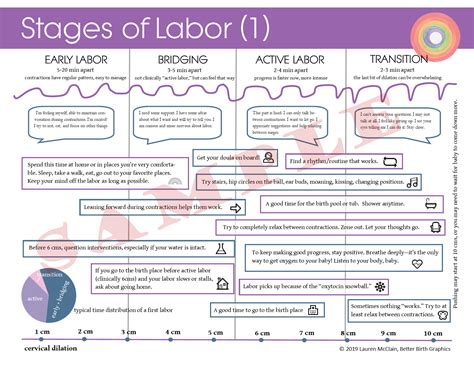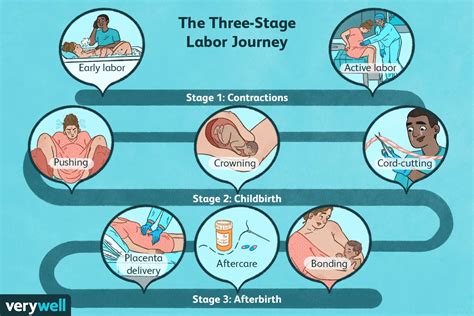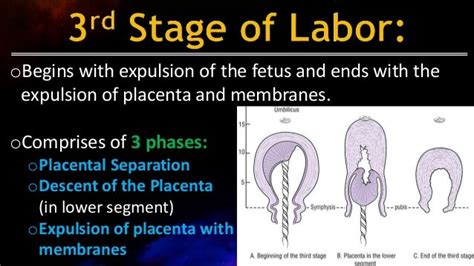Intro
Discover the 3 stages of labor, from early labor to transition and delivery, understanding contractions, dilation, and fetal movement to navigate childbirth with confidence, ease, and preparedness.
The process of giving birth is a complex and highly individualized experience that can vary significantly from one woman to another. Despite these variations, the journey of labor is typically divided into distinct stages, each characterized by specific physical and emotional changes. Understanding these stages can help expectant mothers prepare for the birth of their child and navigate the labor process with greater confidence and awareness. The three stages of labor are a fundamental aspect of obstetric care, providing a framework for healthcare providers to assess progress, offer support, and make informed decisions about interventions when necessary.
As women approach the end of their pregnancy, they often find themselves wondering what the labor process will be like. Will it be long or short? Will it be painful? How will they know when it's time to go to the hospital? These questions reflect a natural curiosity and apprehension about an experience that, while universal, is also deeply personal. By grasping the basics of the three stages of labor, women can better understand their bodies and the unfolding process of childbirth, empowering them to make informed choices about their care.
The anticipation and preparation for labor can be a time of great excitement and anxiety. Pregnant women and their partners may attend prenatal classes, read extensively on the subject, and discuss their preferences with healthcare providers. This preparation is crucial, as it not only educates individuals about what to expect but also fosters a sense of control and readiness. Understanding the stages of labor is a key component of this preparation, allowing women to recognize the progression of their labor and to work effectively with their healthcare team.
Introduction to the Three Stages of Labor

The three stages of labor are defined by distinct physiological milestones. The first stage is characterized by the onset of contractions that cause the cervix to dilate and efface, marking the beginning of the labor process. The second stage commences when the cervix is fully dilated and ends with the birth of the baby. The third stage involves the delivery of the placenta. Each stage has its unique characteristics, challenges, and management strategies, which are crucial for a safe and successful delivery.
First Stage of Labor

The first stage of labor is further divided into three phases: early labor, active labor, and the transition phase. Early labor is the initial phase, where contractions become more frequent and intense, causing the cervix to begin dilating and effacing. Active labor follows, characterized by more rapid cervical dilation and fetal descent. The transition phase is the final part of the first stage, where contractions are very strong and close together, preparing the body for the second stage of labor.
Phases of the First Stage of Labor
The phases of the first stage of labor are marked by significant physical changes and emotional shifts. Women may experience back pain, nausea, and the urge to push, although pushing is generally discouraged until the second stage unless specified by a healthcare provider. Partner support, breathing techniques, and mobility can help manage discomfort and facilitate progress.- Early Labor: This is the onset of labor, where women may experience mild contractions that become more frequent and intense over time. It's a period of anticipation and preparation, where the expectation of meeting the baby soon becomes more real.
- Active Labor: Contractions become stronger, longer, and closer together, leading to more rapid cervical dilation. Women may start to feel the urge to push, although it's crucial to follow the guidance of healthcare providers.
- Transition: This is the most intense part of the first stage, where contractions are very close together, and the body is preparing for the birth of the baby. It's a challenging phase but also a sign that the second stage of labor is approaching.
Second Stage of Labor

The second stage of labor begins when the cervix is fully dilated and ends with the birth of the baby. This stage is characterized by the urge to push with each contraction, helping to move the baby down the birth canal and out of the body. The second stage can be physically demanding but is also a time of great excitement and anticipation, as the moment of meeting the baby is near.
Pushing and Delivery
Pushing is a critical aspect of the second stage of labor. Women are encouraged to push with contractions, using various positions and techniques to help the baby move through the birth canal. The guidance of healthcare providers is essential during this stage, as they can offer support, suggest optimal pushing positions, and monitor both the mother's and baby's well-being.- Positions for Pushing: Different positions, such as squatting, kneeling, or lying on the side, can help with the pushing process. Each position has its advantages and can be more or less comfortable for different women.
- Breathing Techniques: Proper breathing can help women push more effectively and manage the discomfort associated with contractions.
- Support During Pushing: Having a supportive partner, family member, or friend can make a significant difference during the pushing phase, offering emotional support and helping with physical comfort measures.
Third Stage of Labor

The third stage of labor involves the delivery of the placenta, which usually occurs within 5 to 30 minutes after the birth of the baby. This stage is crucial for preventing postpartum hemorrhage and ensuring the uterus begins to contract back to its pre-pregnancy size. Healthcare providers may use uterine massage and oxytocin to help the uterus contract and control bleeding.
Management of the Third Stage of Labor
The management of the third stage of labor focuses on the safe delivery of the placenta and the prevention of complications. Women may receive oxytocin to stimulate uterine contractions and be encouraged to breastfeed, as this can also help the uterus contract. Monitoring for bleeding and assessing the condition of the placenta are critical components of care during this stage.- Uterine Contraction: Encouraging the uterus to contract is key to controlling bleeding and starting the healing process.
- Placenta Delivery: The placenta should be delivered intact to prevent complications. Healthcare providers will inspect the placenta to ensure it is complete.
- Post-Delivery Care: Immediate post-delivery care includes monitoring the mother's and baby's condition, providing pain management as needed, and initiating breastfeeding support.
Conclusion and Next Steps

Understanding the three stages of labor is a vital part of preparing for childbirth. By grasping the physiological changes and emotional shifts that occur during each stage, women can feel more in control and empowered throughout their labor experience. Whether a woman chooses to deliver in a hospital, birthing center, or at home, knowledge of the labor process can help her make informed decisions about her care and advocate for her preferences.
As individuals reflect on the stages of labor, they may have questions or concerns that they wish to discuss with their healthcare providers. Engaging in open and honest communication about expectations, preferences, and fears can enhance the overall experience of childbirth, ensuring that it is as positive and fulfilling as possible.
What are the signs of labor?
+Signs of labor include regular contractions, back pain, and a bloody show. Women may also experience a sudden gush of fluid, which indicates the rupture of membranes.
How long does each stage of labor typically last?
+The duration of labor can vary significantly. The first stage of labor can last from several hours to more than a day, especially for first-time mothers. The second stage usually lasts from 1 to 3 hours, and the third stage typically lasts about 5 to 30 minutes.
What are some strategies for managing pain during labor?
+Strategies for managing pain include breathing techniques, massage, hydrotherapy, and pharmacological interventions like epidural anesthesia. Each woman's experience with pain is unique, and what works for one may not work for another.
Can I have a vaginal delivery if I've had a cesarean section before?
+It depends on various factors, including the reason for the previous cesarean section, the type of incision used, and the current pregnancy's characteristics. Women who have had a previous cesarean section should discuss their options with their healthcare provider.
What kind of support is available for new mothers after delivery?
+New mothers can receive support from healthcare providers, lactation consultants, and social services. Many communities also offer resources such as parenting classes, support groups, and home visits from nurses or doulas.
As we conclude our exploration of the three stages of labor, it's essential to remember that every woman's journey through childbirth is unique. By understanding the physiological and emotional aspects of labor, women can approach this life-changing event with confidence and a sense of preparedness. We invite readers to share their experiences, ask questions, and seek support from healthcare professionals and community resources, fostering a network of care and understanding that extends beyond the stages of labor into the broader journey of parenthood.
